The practice of kinesiology consists of evaluating the dynamics of a person's movement, determining and ensuring the implementation of an intervention or treatment plan which, through physical activity, aims to optimize human motor performance in interaction with the environment.
-
The dynamics of human (or person's) movement is the sum of all interactions or variables that have an impact on the purpose and quality of the execution of a motor action;
-
The intervention plan and the treatment plan are tools used to identify the client's needs, the objectives pursued, the means to be used and the foreseeable duration during which services will have to be provided. The treatment plan applies more specifically to clients with disabilities or impairments;
-
Physical activity is any body movement that results in substantial energy expenditure, greater than basal metabolism (as opposed to inactivity);
-
Human motor performance is defined as the appropriate and efficient control of motor processes (cognitive, emotional, physiological, anatomical, biomechanical, neuromotor and metabolic) and resulting body movements in its environment. It considers the development and progress of individuals in their personal experience, in improving autonomy, organic attributes, valuing know-how, developing or rebuilding self-esteem and self-esteem. self-confidence.
-
Optimizing performance involves achieving the best possible performance depending on an individual's condition and goals at the end of the kinesiologist's interventions, but it also calls for sustainability. So the kinesiologist must ensure that post-intervention gains are maintained, but he must also provide the necessary tools for the individual so that he can continue his development in a process of self-determination established from the start of his interventions.
THE GENERAL ROLE OF THE KINESIOLOGIST
The kinesiologist is a profesional in human movement who uses physical activity for the purposes of prevention, treatment and rehabilitation. More precisely, the kinesiologist intervenes on the dynamics of human movement and its determinants at all stages of life, both functionally and high performance, by relying on its biopsychosocial foundations including its adaptation capacities. and rehabilitation from a global health perspective.
The role of the kinesiologist is to maintain, improve or restore human health primarily through physical activity. More specifically, the kinesiologist assesses the dynamics of the person's movement in order to target their needs and problems, identify restrictions of a medical, pharmaceutical or other nature, understand the kinesiological history, set the limits of his intervention or, if he considers it necessary, to recommend his client to another professional.
During its evaluation, the tests relate to functional and motor capacities, the current physical and medical condition as well as several other aspects so it integrates the elements, such as motivational aspects, mental health, cognition, psychosocial dimensions and affective, environmental and predisposing factors of the disease, if applicable.
The kinesiologist uses a personalized approach and his interventions are carried out with both individuals and groups.
THE KINESIOLOGIST'S REFERENCE FRAMEWORK (MAIN ACTIVITIES AND TASKS)
Here is the kinesiologist's frame of reference
Here is the skills profile of the kinesiologist in the RSSS





